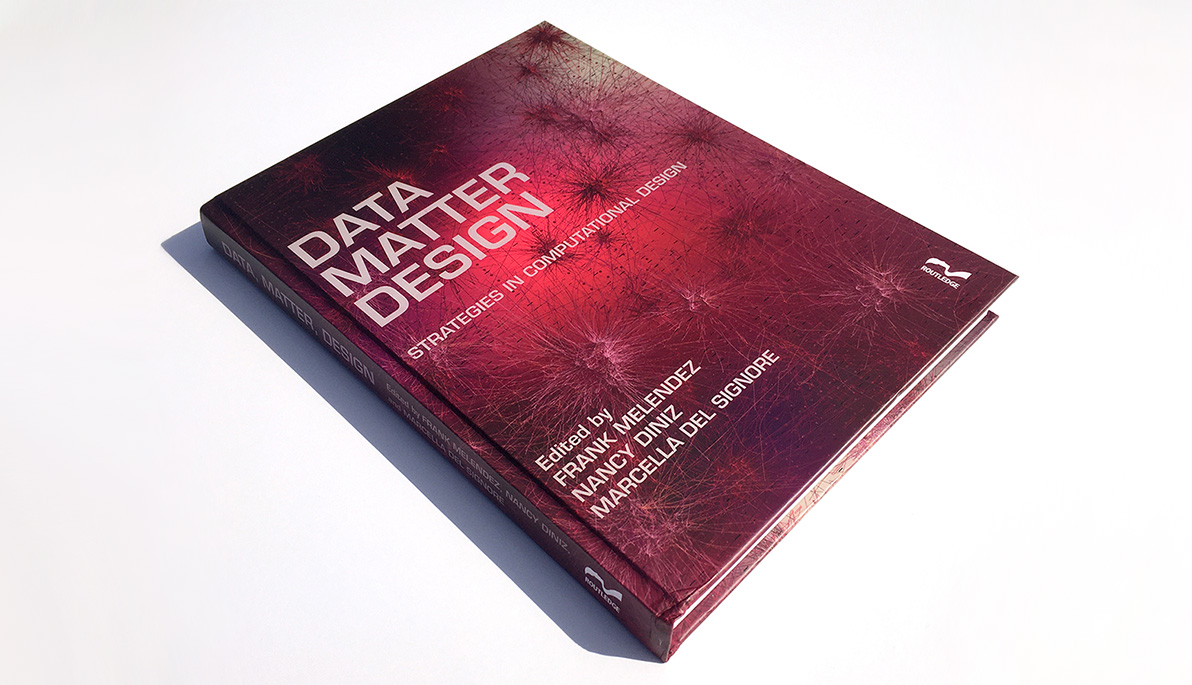News
Why Data Matters in Architecture and Design
November 5, 2020
At “Data, Matter, Design: Strategies in Computational Design” on October 28, educators in architecture discussed how data and the use of computational design strategies play a critical role in current design processes.
Technology has changed the way architects view and execute design projects through the use of computer programs and tools. Technology has also radically altered and influenced people’s relationship to cities, for example the use of automated delivery services, ridesharing apps, and driverless vehicles. With quicker and easier access to data, such as energy, climate, economic, and human behaviors, architects and designers can use the information to design urban and landscape systems to address some of the world’s most pressing issues such as climate crisis, public health, food security, environmental challenges, and affordable housing among others.
“There are 2.5 quintillion bytes of data created each day at our current pace, but that pace is only accelerating with the growth of the Internet of Things. Today, for the first time, we have more data than we need,” says Marcella Del Signore, M.Arch., associate professor and director of the M.S. in Architecture, Urban, and Regional Design program. “This phenomenon triggers a spontaneous question: Why do designers use or need data as part of their design process? Data in themselves, without application or a critical eye, are quite useless. The question is always the type of lens that we are using to collect, filter, analyze, and ultimately apply data. For designers, the questions and opportunities that arise from the lens used to apply data in design processes are both generative and productive forms of inquiry.”
The event celebrated the launch of Del Signore’s book, Data, Matter, Design: Strategies in Computational Design, published by Routledge. The book, co-edited with Nancy Diniz, course leader at Central Saint Martins – University of the Arts London, and Frank Melendez, M.Arch., assistant professor at Bernard and Anne Spitzer School of Architecture at City College of New York, features a wide range of curated projects and contributed texts by leading architects, urbanists, and designers that transform data into spatial, experiential, and performative configurations within urban ecologies, emerging materials, robotic agents, adaptive fields, and virtual constructs.
“With the exponential growth of the use of data within all disciplines of design, we are witnessing a higher level of integration, hybridization, and cross-fertilization of the application of data among spatial practitioners including architects, urbanists, designers, and artists,” says Del Signore.
During the discussion, panelists talked about some of the book’s major themes, including how data is used in an urban and ecological scale (the relationship between people and their environment), fabrication and robotics in design, virtual and augmented reality, as well as the development of new materials and the manipulation of traditional ones. They also addressed how computational and automated processes can help make projects move more efficiently as well as how the ability to see a structure in a 3-D setting helps a designer see how the building interacts within a specific environment.
The book focuses on and encourages discussions on how data in design methodologies and theoretical discourses have evolved over the last two decades and why the use of data collection, measurement, quantification, simulation, algorithms, and their integration into methods of reading and producing spatial conditions, are becoming vital in academic and industry practices.
“Data, Matter, Design is an essential read and a comprehensive overview of emerging design trajectories and processes that creatively rely on data and technology advances in architecture- and design-related fields,” says Maria Perbellini, M.Arch., dean of NYIT School of Architecture and Design. “Marcella’s book raises questions on data applications informing design synthesis and computational thinking in design practices. It is an excellent contribution that fits well with the innovative, ambitious, and critical direction of our School of Architecture and Design.”
Panelists:
- Marcella Del Signore, M.Arch., associate professor and director of Master of Science in Architecture, Urban, and Regional Design, NYIT School of Architecture and Design
- Nancy Diniz, course leader of MA in Biodesign, Central Saint Martins – University of the Arts London
- Frank Melendez, M.Arch., assistant professor, Bernard and Anne Spitzer School of Architecture at City College of New York
Respondents:
- Randy Deutsch, M.S., clinical associate professor, University of Illinois at Urbana – Champaign
- Jeremy Edmiston, associate professor and director of Master of Architecture, Bernard and Ann Spitzer School of Architecture, City College of New York
- Mathew Ford, M.Arch., associate professor of architecture, NYIT School of Architecture and Design
- Pablo Lorenzo-Eiroa, M.Arch. II, director of Master of Science in Architecture, Computational Technologies, NYIT School of Architecture and Design, New York Institute of Technology
- Shawn Rickenbacker, associate professor and director of J. Max Bond Center, Bernard and Anne Spitzer School of Architecture, City College of New York
- Allen Sayegh, associate professor in practice of architectural technology, Harvard Graduate School of Design
- Anthony Vanky, Ph.D., assistant professor of urban planning, A. Alfred Taubman College of Architecture and Urban Planning at the University of Michigan
- Jason Van Nest, M.Arch., associate professor of architecture, NYIT School of Architecture and Design





